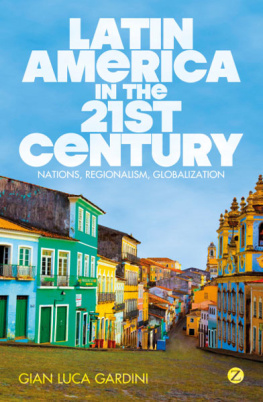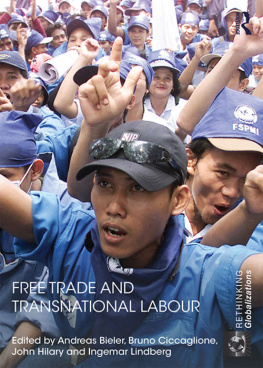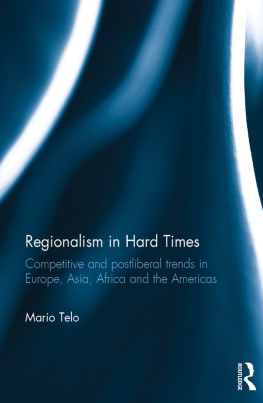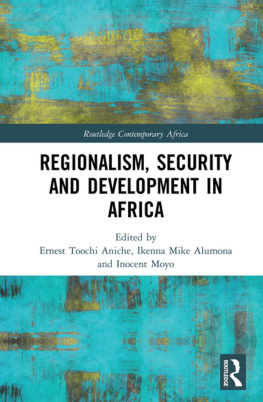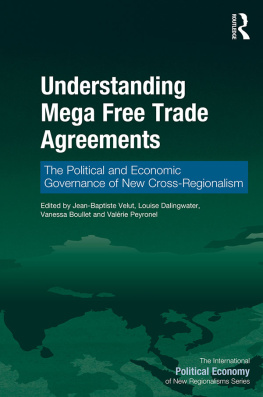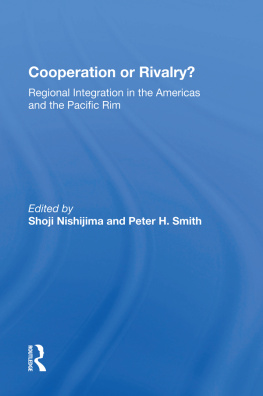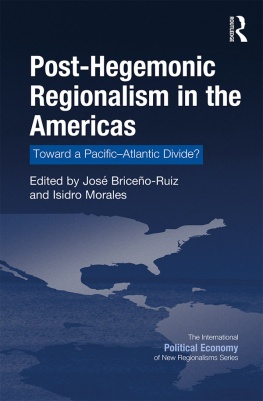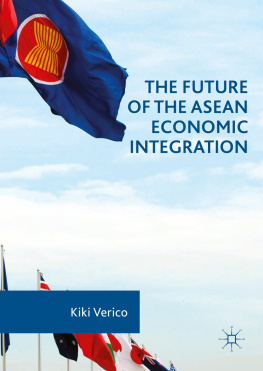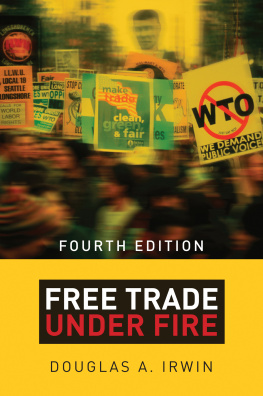SOUTH AMERICAN FREE TRADE AREA OR FREE TRADE AREA OF THE AMERICAS?
To my mother,
To the memory of my father, and
To my wife, Olga, who made this book possible
South American Free Trade Area or Free Trade Area of the Americas?
Open regionalism and the future of regional economic integration in South America
Mario Esteban Carranza
Texas A & M University, Kingsville, USA
First published 2000 by Ashgate Publishing
Reissued 2018 by Routledge
2 Park Square, Milton Park, Abingdon, Oxon OX14 4RN
711 Third Avenue, New York, NY 10017, USA
Routledge is an imprint of the Taylor & Francis Group, an informa business
Copyright Mario Esteban Carranza 2000
All rights reserved. No part of this book may be reprinted or reproduced or utilised in any form or by any electronic, mechanical, or other means, now known or hereafter invented, including photocopying and recording, or in any information storage or retrieval system, without permission in writing from the publishers.
Notice:
Product or corporate names may be trademarks or registered trademarks, and are used only for identification and explanation without intent to infringe.
Publishers Note
The publisher has gone to great lengths to ensure the quality of this reprint but points out that some imperfections in the original copies may be apparent.
Disclaimer
The publisher has made every effort to trace copyright holders and welcomes correspondence from those they have been unable to contact.
A Library of Congress record exists under LC control number: 00036349
ISBN 13: 978-1-138-72547-8 (hbk)
ISBN 13: 978-1-315-19187-4 (ebk)
Table 5.2, p. 169, is reprinted by permission of Westview Press, a member of Perseus Books, LLC.
Copyright 1996 by Westview Press, Inc.
In the Summer of 1997 I taught a course on Latin American Foreign Policies at Universidad de las Americas (UDLA) in Puebla, Mexico, as part of our faculty exchange program. It was a very valuable experience, which gave me the opportunity to teach in Spanish (for the first time in 23 years!) while learning a lot about the North American Free Trade Agreement (NAFTA) and how it is perceived by the Mexican academic community. My Mexican students challenged my own image of hemispheric regionalism and for the first time, the idea of writing a book on the subject crossed my mind.
In March 1998 I was a discussant at the panel on Regionalism II: Africa, Latin America and South Asia, during the annual meeting of the International Studies Association (ISA) in Minneapolis, Minnesota. Back in Kingsville I was contacted by Kirstin Howgate, from Ashgate, who had attended the panel and expressed an interest in my research on South American regionalism. I had presented the paper "SAFTA or FTAA? 'Open Regionalism' and the Future of Regional Economic Integration in South America" at the same conference and Ashgate was willing to consider a book project on the same subject. I had done research on the new regionalism for some time (see Carranza, 1993a, 1993b, 1993c and 1995) and the book project was an excellent opportunity to "put all the pieces together" while pursuing my research interest in the Southern Cone Common Market (Mercosur).
The book is organised in six chapters. might take, focusing on the prospects for Mercosur to become an autonomous trading bloc, or the hub of a potential SAFTA. The chapter addresses the "trade creation" versus "trade diversion" debate, and Mercosur's foreign relations with other Latin American countries, NAFTA, and the European Union.
places the prior discussion within the broader framework of US-Latin American relations, asking the question: what kind of hegemony, if any, is the US still exercising over South America? The concluding chapter revisits the issue of globalization and the new regionalism and considers three alternative scenarios of US-South American relations at the beginning of the millennium.
It is always difficult to write on evolving current events. The politics of free trade (both globally and regionally) presents an ever-changing picture. For example, in the Summer of 1999 the conventional wisdom was that the future of regional trading blocs would be significantly determined by the World Trade Organization's proposed Millennium Round of global trade negotiations, due to start in November 1999. Yet the WTO's conference in Seattle collapsed in bitterness and discord. The trade ministers were unable to agree on a common agenda to rewrite the rules of world trade for a new millennium, amid street demonstrations organised by a variety of NGOs challenging the WTO's "supranationality" and its right to modify the domestic legislation of members states in the name of "free trade."
In this book I have attempted to go beyond current events, by looking at the structural trends behind the evolution of the new regionalism in South America and the Western Hemisphere. Although the Brazilian proposal for SAFTA has been temporarily shelved, my argument is that SAFTA could become an alternative to the Free Trade Area of the Americas (FTAA) considering the structural obstacles to achieve the latter and the structural achievements of Mercosur: establishment of a customs union on schedule, resolution of collective action problems between Argentina and Brazil; unified diplomacy during the FTAA negotiations (from Miami to Santiago); ability to attract new associate members (Chile and Bolivia) and the Mercosur-Andean Community negotiations to establish a free trade area that could be the "hub" for a SAFTA. Structural trends open up the possibility for the South American countries to define an independent role in the global economy, taking their destiny "in their own hands." Whether or not they do it will depend on a number of factors, including domestic politics (especially in Argentina and Brazil) and whether the neoliberal model can survive the ups and down of the global economy. A world slump at the beginning of the millennium would create strong incentives for Mercosur and its South American neighbours to cling together. A central argument of this book is that in a world of competing trading blocs South America is not necessarily condemned to greater integration with the US and could create its own autonomous trading bloc to maximise the subcontinent's relative gains and security vis--vis other trading blocs, including NAFTA.
This book has not been written "against" the US, even though it criticises the traditional US policy of "benign neglect" toward Latin America. There is an enormous potential for co-operation between the US and Latin America based on perceptions of convergent interests if the US can definitely abandon the "hegemonic presumption" in its relations with its Latin American neighbours and the image of Latin American elites as essentially "dependent."
The question of economic co-operation in the Western Hemisphere is inextricably linked with the issue of US hegemony in Latin America. Whether US hegemony in the global economy is declining is a controversial issue in the international relations literature. is essential to my argument that Mercosur (and eventually SAFTA) may strengthen the position of the South American countries in their trade negotiations with the US and that SAFTA is a meaningful alternative to the "deep integration" agenda embedded in the US conception of the FTAA.


